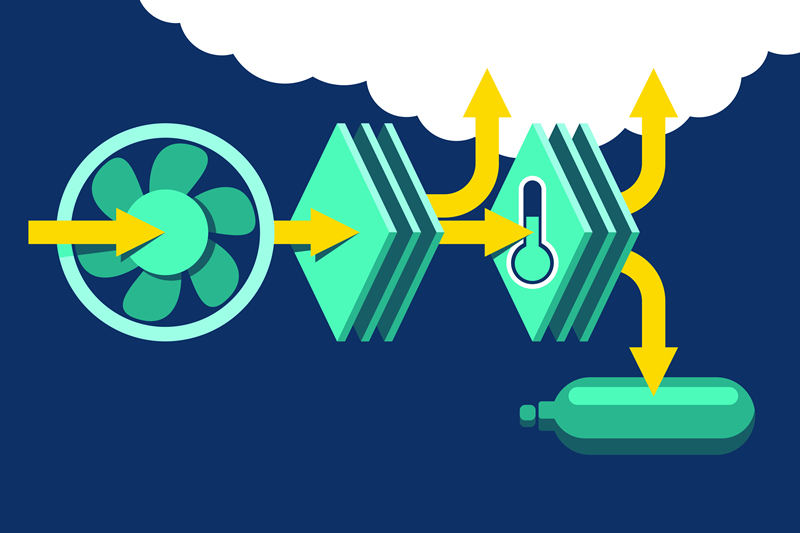Direct Air Carbon Capture & Storage (DACCS)
27
A government-funded report cautions that the UK must allocate up to £30 billion towards establishing a network of large-scale air purification systems aimed at extracting CO2 from the atmosphere to achieve net zero emissions. These 'direct air carbon capture systems' would have the capacity to extract up to 48 million tonnes of CO2 annually, subsequently injecting it into decommissioned oil and gas reservoirs beneath the North Sea or Irish Sea. The report, authored by Energy Systems Catapult (a government-backed organisation fostering innovation) asserts that without such an initiative, the UK will fail to meet its goal of achieving net zero emissions by 2050.

Direct Air Carbon Capture and Storage (DACCS) systems are technologies designed to remove carbon dioxide (CO2) directly from the atmosphere and then store it in geological formations underground or in other long-term storage facilities. Unlike traditional carbon capture and storage (CCS) systems, which capture CO2 emissions from industrial sources like power plants or factories, DACCS systems capture CO2 directly from ambient air.
DACCS typically involves several steps:
- Air Capture: DACCS systems use chemical processes or sorbents to capture CO2 directly from the air. This captured CO2 is then concentrated for storage.
- Carbon Dioxide Separation: The captured CO2 is separated from the air and concentrated into a pure stream of CO2.
- Storage: The concentrated CO2 is then transported to storage sites, typically deep underground, where it is injected into geological formations such as depleted oil and gas reservoirs, saline aquifers, or other suitable geological formations. The CO2 is stored securely to prevent its release into the atmosphere.
DACCS systems offer potential benefits in terms of flexibility and scalability since they can be deployed in various locations, regardless of the source of CO2 emissions. They can also potentially remove CO2 emissions from sectors where reducing emissions at the source is challenging, such as aviation or agriculture. However, DACCS technologies are still in the early stages of development and deployment, and they currently face challenges related to energy consumption, cost-effectiveness, and scalability. Despite these challenges, DACCS systems represent a promising avenue for addressing climate change by removing CO2 directly from the atmosphere.
The landscape for DACCS is being formed over the next few years and these are exciting times for all involved within this groundbreaking sector.
#protea #emissions #monitoring #cems #ftir #gas #analysers #shipping #marine #carbon #capture
Other Articles
Global Underground CO2 Storage Data Offers Hope Amid Rising Emissions
01
IMO Postpones Adoption Of Global Net-Zero Shipping Framework
04
Pioneering Carbon Capture Projects Ready For Construction
03
Methanol & Ammonia Deemed Ready As Zero-Emission Shipping Fuels
01
Carbon Capture Storage Reaching A Turning Point In Decarbonisation
13
CCS To Capture 15% Of Shipboard Carbon Emissions By 2050
29
Global Shipping Industry Struggles To Navigate Net Zero Transition
21
Carbon Capture Surges as Economics Policy & Industry Demand Align
14
GHG Emissions At Ports On The Rise Despite Initiatives
07
Carbon Capture Utilisation & Storage In A Nutshell
30